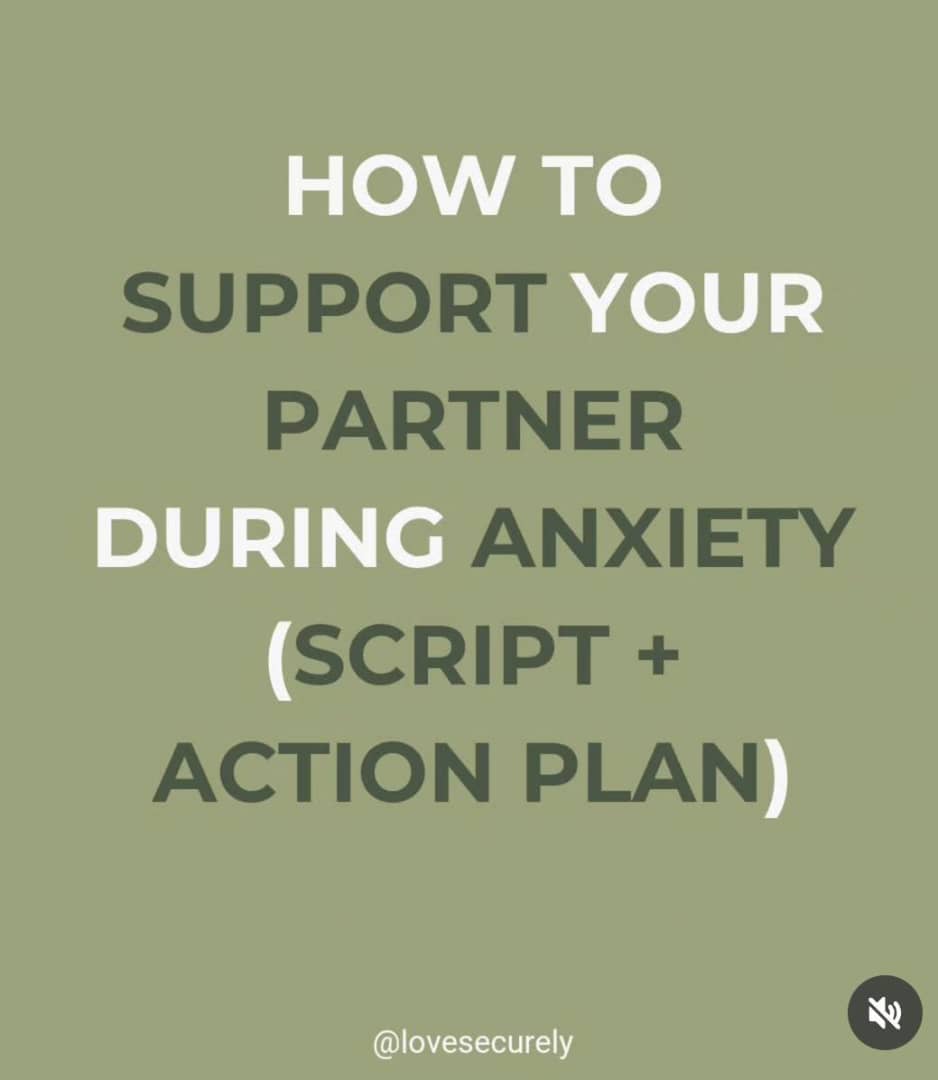HOW TO SUPPORT YOUR PARTNER DURING ANXIETY
1. RECOGNIZE THE ANXIETY SIGNS (FIRST 30 SECONDS)
Watch for:
Rapid breathing or shallow breaths
.Pacing or restlessness
“What if…” spiraling thoughts
.Withdrawal or going quiet
.Physical tension (clenched jaw, tight shoulders)
Your response: “I can see you’re feeling anxious right now. I’m here with you.”
2 THE IMMEDIATE RESPONSE (FIRST 2 MINUTES)
“You’re safe. I’m here with you.”
“Let’s breathe together for a minute.“
“What do you need from me right now?”
“Just calm down”
“Everything will be fine”
“You’re overreacting”
“Don’t worry about it”
Validation first, solutions later.
- THE GROUNDING TECHNIQUE (3-5 MINUTES)
Guide them through the 5-4-3-2-1 method:
“Tell me 5 things you can see around us”
“Now 4 things you can touch”
“3 things you can hear”
“2 things you can smell”
“1 thing you can taste”
This brings them back to the present moment and out of their anxious thoughts. - ASK, DON’T ASSUME MINUTE)
“What would be most helpful right now?”
Options they might choose:
Just sitting together quietly
Talking through their worries
Distraction with something light
Going for a walk together
Being left alone for a bit
Let them guide what they need instead of guessing. - IF THEY WANT TO TALK:
THE LISTENER SCRIPT
“Tell me what’s going through your mind.”
Then use:
“That sounds really scary”
“No wonder you’re feeling anxious about that”
“What part worries you most?”
“Have you felt this way before? What helped then?”
Don’t try to logic them out of their feelings. Just witness and validate
- IF THEY WANT DISTRACTION: THE COMFORT SCRIPT
Gentle distractions:
“Want to watch something funny together?”
“Should we make some tea and sit outside?”
“How about we do that puzzle we started?”
“Let’s listen to your favorite playlist”
Keep it low-key and soothing, not stimulating or overwhelming. - IF THEY NEED SPACE: THE SUPPORTIVE SCRIPT
- “I understand you need some time alone. I’ll be [specific location] if you need anything.”
- Then: Check in every 30-45 minutes with a gentle text
- Prepare something comforting (tea, snack, cozy blanket)
- Don’t take their need for space personally
- Be available when they’re ready
8. WHAT NOT TO DO (COMMON MISTAKES)
Try to fix or solve their anxiety immediately
Minimize their feelings: “It’s not that bad”
Give unsolicited advice: “You should just…”
Take their anxiety personally: “Are you mad at me?”
Rush them to feel better: “Are you calm yet?”
Anxiety isn’t logical, so logical responses often don’t help.























